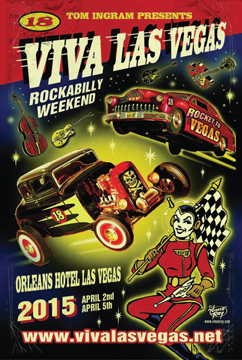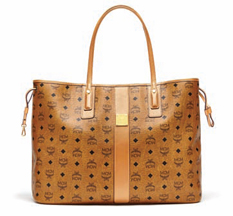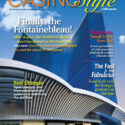
In a 2017 poll conducted by Meetings & Conventions magazine, 87 percent of event planners said they “always or sometimes” used theming to spice up their gatherings.
And for good reason. Certainly, themed events are fun for guests. And simply choosing a theme makes it easy for planners to manage countless related details—from the food and drink menus to the décor and table settings to the music, activities and giveaways.
And of course, a well-executed themed event in the casino resort can deepen loyalty, invite return visits, and boost patronage on the gaming floor.
Here’s a for-instance. Every year, the Orleans Hotel & Casino, just off the Strip in Las Vegas, has staged its popular Viva Las Vegas Rockabilly Weekend. This inspired celebration—it actually lasts four days—is so popular, last year tickets sold out in seven hours. The Orleans routinely negotiates special room rates for Rockabilly guests at other hotels in the neighborhood—all in mid-April, one of the city’s most sluggish tourism periods.
“Rockabilly takes over the entire casino,” says Mike Musicaro, vice president of marketing and operations for Boyd Gaming, which owns the Orleans. “We have a car show with hot rods from the 1950s. We have the ’50s music. We piggyback a slot tournament on the weekend, and continue that theme all the way through. Players love it.”
Stardust Memories
Orleans has a full calendar of such events; Musicaro and his team plan them up to a year in advance, and weave in new events as needed. “It’s kind of a juggling act—you have the natural business, the cash business, and you don’t want to displace that. You look for pockets of opportunity to stage a special event, and tying it in with a theme is even better.
“We can have our cake and eat it too,” he says, “getting the rooms occupied with known gamblers.”

Viva Las Vegas Rockabilly Weekend at the Orleans draws hot-rod enthusiasts, ‘50s music fans, and retro-fashion lovers
Whatever the market, events of all kinds liven up the shoulder seasons, neutralize slumps and activate midweeks, says Musicaro. A signature event at the Orleans is a Stardust reunion/slot tournament that enables loyal longtime players to “see old faces and resume old friendships.”
Of course, many holidays are a natural reason to party. The recent New Year’s Eve bash at the casino employed a “Big Top” theme, complete with a ringmaster, stilt walkers, acrobats and clowns.
Some events are designed less to pull in new guests—who are, after all, an unknown quantity—than to delight loyal players.
“Quality counts,” says Musicaro.
During Rockabilly, for example, which books up a year in advance, the casino “carves away about 100 rooms for high-end players. We fill up almost 2,000 rooms,” says Musicaro, “and we don’t want to grow it anymore because we’re at capacity.”
Among attendees—including many from Europe, China, Japan and Korea—the drink of choice is none other than Pabst Blue Ribbon.
Adding a personal touch, in addition to eblasts and evites, many guests are personally invited by their favorite hosts, Musicaro says. “They pick up the phone and make the reservations. They make sure the room is in tip-top shape and that the guests are welcomed with their favorite wine or beverage. They make sure any issues are resolved right away.”
No wonder Rockabilly is now in its 23rd year.
Wheels of Fortune
When Randy Reedy first joined Valley View Casino & Hotel in San Diego County, California, he says the slot tournaments there were “boring as hell.”
“I went to the general manager and said, ‘Do you mind if I go buy a costume? I’ll keep it under control—I just want something to liven it up.’” He did just that.
As vice president of slots, Reedy transformed the tourneys into costume parties for grownups. Guests who dressed up in accordance with the given theme—as hippies, beach bums or Christmas elves—became eligible for special perks and recognition.
Owned and operated by the San Pasqual Band of Mission Indians, Valley View attracts throngs of guests with its slot tournaments and ongoing events like a monthly car giveaway. Players must earn a certain number of points to qualify. Though 60 people will participate in the big drawing, 2,500 will show up. As a result, revenues “are probably 20 percent more than the normal Friday,” says Reedy.
An annual watch giveaway is also tremendously popular, with top-tier players lining up to win Cartier and Movado timepieces. “When we open, I’ll probably have 100 people already in line,” says Reedy. “But I’m not making a penny when they’re standing in line, so we issue up to 1,400 numbers so they can go play until we start calling them back. It’s a really good, profitable event. That Saturday or Sunday could see a 50 percent profit margin.”
Though the casino’s prizes are super-sized, he notes, ultimately the books must balance in the property’s favor. “If the rewards are bigger than the wallet that’s coming in the door,” he says, “you’ve outspent your profitability.”
At his special events, Reedy continues to sport the nutty costumes, and encourages others to do the same. He’s even been known to prowl the property decked out as a pimp, in a purple suit with a bright green shirt and hat. “You name it,” he says. “They’ve dressed me in just about anything you can think of.”
The Right Touch
Julia Carcamo, head of Louisiana-based marketing consultancy J. Carcamo and Associates, says themed events must be wholly aligned with a property’s brand. If you’re throwing a luau, it has to be your brand’s version of a luau, or toga party, or disco night, or country hoedown. Otherwise, don’t do it.
Think of a brand as your “guardrails,” she says. “If you have a family-friendly brand, you’re not going to do a ‘Girls Gone Wild’ event. That’s a drastic example, but don’t do something that’s incongruent with your brand identity.”
Don’t cut corners, either, even if you think you can. During boxing events at Wynn Resorts, for example, “we used to host the media, and everything in the media room was designed to give them a brand experience,” including a fabulous food spread, Carcamo says. “These guys were huddled over their laptops, checking stats and filing stories; we could have gotten away with serving them popcorn.
“But the food and beverage program was so much part of our brand identity, to do that would have been unthinkable.” The journalists “really noticed the difference.”
Planning a themed event “is not throwing a dart at a dartboard or doing something predictable,” she says. And to succeed, an event should “touch all the senses.”
When the party’s over, guests will remember if every touch point—the music, the food, the surroundings—was aligned and memorable.
Swag that Brings the Swagger
Q&A with Paul Gordon, Rymax Senior Vice President of Sales
 Rymax Inc. is the gaming industry’s premier incentive provider, with on-target gifts for players, employees and corporate partners.
Rymax Inc. is the gaming industry’s premier incentive provider, with on-target gifts for players, employees and corporate partners.
One of the most surprising giveaways in its collection? The legendary Polaroid camera.
For the unenlightened, this handy-dandy item, invented in 1947, was the first camera to spit out an full-color image on the spot. Better still, the photographs developed in real time, taking shape as the photographer and subject looked on.
In the smartphone/selfie/Insta-everything era, why is the Polaroid camera a coveted gift?
“It’s a fun item, like those single-use throwaway cameras you used to get at weddings,” says Paul Gordon, Rymax senior vice president of sales. “It’s actually hot among millennials, who love instant gratification.”
It’s also a fairly low-cost investment, on a scale that also includes elite fashions (Stella McCartney, Alexander McQueen), tech devices (Apple, Boss, Bluetooth), fine jewelry (Tiffany, Swarovski, Breitling), even household appliances (Dyson, Viking, Mikasa).
Casino Style: Do guests expect to walk away with so-called swag, the goodie bags you pick up at the end of an event?
Gordon: Casinos back in the old days used to give away tchotchkes—everything from muffin tins to logoed items, and eventually players didn’t want them anymore. They want what they feel they’re owed, what they’ve earned—branded products they would see in the store and want to buy.
What gifts are in demand, and for what players?

This MCM-branded leather tote retails for $650
Rymax preaches segmentation and concentration—reward all players in proportion to their value. Players who spend a lot of time at the slots or tables or however they’re accumulating their comp dollars want to walk away with something that resonates. They’re going to use that Michael Kors handbag for the next year at least, and that watch for 15 years. So the trophy value also has residual value from a profit-and-loss standpoint. (High-end) products make a tremendous amount of sense if you look at the amortization of that cost to the loyalty of the player.
“Made in the USA” matters in some parts of the country. The environmental piece, sustainability, is important. Rewards are also dictated by the economic situation. When the economy is robust, unemployment is low and 401Ks are great, people are more apt to redeem luxury items. As the economy tightens up, they go to more practical things. You have to have a very eclectic mix of products and be nimble enough to appeal to those needs during (fluctuating) economic times.
What amazes us is that people will redeem things they want but don’t necessarily want to buy. A Dyson vacuum cleaner isn’t the sexiest thing in the world, but everybody wants one.
Do elite brands matter more to women, or does their appeal cross gender lines?
Women are more cognizant of brands than men, who don’t care if something was featured on the red carpet at the Oscars or some celebrity was seen using it. Not to say men don’t appreciate a cool brand. Status is powerful. Sunglasses are always big.
Can you mention some Rymax rewards that really went through the roof?
Electronics are very strong, especially connectivity and smart devices. They drive a tremendous amount of redemptions.

Tech goes over big with high-value players, like this Amazon Echo
Fashion has come up in a big way, too. As retail continues to shrink, the brands say, “Where do we go to build brand equity and drive sales?” We’re doing programs with the biggest companies in the world, because you can really target based on income level, geographic participation, all those things. Ten years ago, fashion brands didn’t see (incentive programs) as an important channel. Now it’s critical.
What incentive product simply didn’t click?
We brought a high-tech cooler on board. It sounded great, solar-powered. But at the end of the day, I think the price point was really too high at for what it actually did: keep things cold






